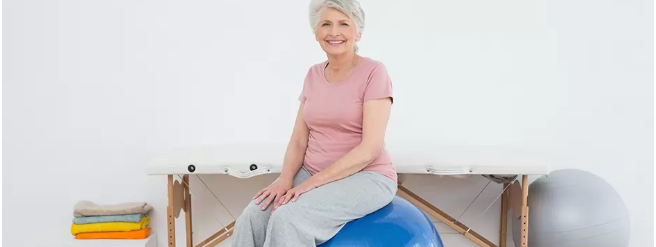

Balance is simply defined as an individual’s ability to maintain their center of gravity over their base of support. Lean over too far beyond your base of support, and you’ll be falling to the ground. Narrow your base of support too much and it doesn’t take too far to lean before you lose your balance. That’s one reason that so many falls happen in the mid stance phase of the gait cycle when you’re standing on only one foot and have a significantly reduced base of support.
There are three main systems that your body uses to perceive balance and maintain your center of gravity over that base of support. In each of these systems, the central nervous system will take in all of the incoming information and send signals out to selective muscles, effectively providing stabilizing torque to keep you upright.1 Let’s take a look at each of these three systems a little closer:
Somatosensory/ Proprioceptive System
Proprioception is the ability of your body to tell where it is in space. Throughout your body rests populations of mechanosensory neurons that have the ability to sense, among other things, tension in your muscles and tendons. Through a reflex pathway, these neurons send information to your brain, which in turn subconsciously sends information back to your muscles to fire them and keep your balance if you sway too far out of place.2 The proprioceptive system can often be lacking due to normal age related changes, or after an insult to tissue such as an injury or surgery. Luckily, similar to a muscle, you can train your body’s proprioceptive system through a variety exercises and balance training with the help of your physical therapist.
Visual System
Likewise, your visual system takes input from your eyes and relays it to the brain so your body can maintain its equilibrium. As many people age, they rely more heavily on the visual system due to a reduction in the input from either the proprioceptive or vestibular systems. As a result, many falls with the elderly tend to happen at night (when they have a harder time seeing) or in the shower (when they close their eyes to wash their hair).
3. Vestibular System (inner ear)
Finally, the vestibular system consists of three orthogonal semicircular canals along with two otilith organs in either inner ear. Working together, these two organs provide constant input to the brain regarding movement of the head and position of your body relative to gravity.3 Age related changes can reduce the effectiveness of these organs over time, additionally, a variety of ailments producing dizziness or vertigo-like symptoms may result from dysfunction of the vestibular system. Oftentimes, seeking the counsel of a physical therapist that has been trained or specialized in vestibular rehabilitation can help to diagnose and treat specific conditions relating to your inner ear.
Physical Therapy for Balance
Physical therapy can have positive effects on balance by training the proprioceptive system, improving strength and posture, or by diagnosing and treating particular ailments of the inner ear. While recognizing a balance problem after it has started is easy, it’s obviously preferred to catch a problem before it results in a fall. If you have any doubts or questions about your balance, schedule a free assessment at SPTW so our experts can help determine what may be causing your balance issues and provide recommendations for the best course of action regarding treatment.

